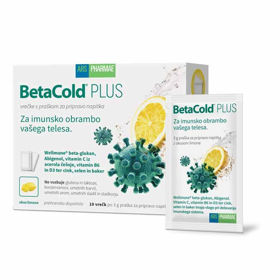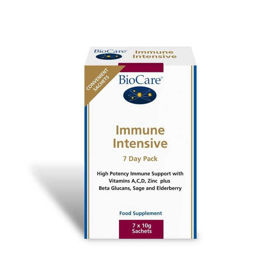Vprašanje stranke:
Koliko časa je angina nalezljiva? Vprašanje anonimne stranke
Odgovor farmacevta:
Splošno pravilo je, da je angina najbolj nalezljiva v prvih nekaj dneh po začetku okužbe, ko so simptomi najbolj izraziti. Pri streptokokni angini je nalezljivost največja predvsem v prvih 2 do 3 dneh zdravljenja z antibiotiki ali 24 do 48 ur po začetku zdravljenja, če se antibiotiki ne uporabljajo. V tem času je tudi tveganje za prenos okužbe na druge ljudi najvišje. Preverite več tudi o angini pektoris.
Ko se začne zdravljenje z antibiotiki in se simptomi začnejo izboljševati, postane tudi nalezljivost postopoma manjša. Kljub temu pa je priporočljivo, da se med zdravljenjem in nekaj dni po koncu zdravljenja še vedno upoštevajo ustrezni higienski ukrepi, da se prepreči morebitna kontaminacija in širjenje okužbe.
Koliko časa po koncu zdravljenja angine smo lahko še nalezljivi?
Po koncu zdravljenja angine s primernimi antibiotiki običajno ne obstoja več nalezljivost, vendar se lahko točen čas, ko oseba ni več nalezljiva, razlikuje glede na več dejavnikov, vključno z vrsto okužbe, resnostjo simptomov in individualnim imunskim odzivom.
Pri bakterijski angini se običajno priporoča izolacija in zdravljenje s primernimi antibiotiki v obdobju vsaj 24 do 48 ur po začetku zdravljenja z namenom, da se zmanjša tveganje za nadaljnje širjenje okužbe. Po tem času je običajno manj verjetno, da je oseba še vedno nalezljiva, vendar se priporoča nadaljnje upoštevanje ustrezne higiene, kot je redno umivanje rok, da se prepreči morebitna kontaminacija in širjenje okužbe.
Pri virusni angini ali drugih vrstah angine je čas, ko oseba ni več nalezljiva, odvisen od tega, kako hitro se simptomi zmanjšajo in kako hitro se imunski sistem odzove na okužbo. Praviloma je pri virusni angini oseba manj nalezljiva, ko simptomi izginejo, vendar se priporoča previdnost in upoštevanje higienskih ukrepov še nekaj dni po tem, da se prepreči širjenje okužbe.
Ali lahko preprečimo prenos angine na novorojenčka v obdobju dojenja?
Če imate angino ali sumite, da ste okuženi, obstajajo nekateri ukrepi, ki jih lahko sprejmete, da zmanjšate tveganje za prenos okužbe. Med dojenjem si temeljito umijte roke s toplo vodo in milom ter jih posušite pred vsakim stikom z dojenčkom. Uporabite lahko tudi razkužilo za roke na osnovi alkohola. Če je mogoče, med dojenjem nosite zaščitno masko, da zmanjšate tveganje za prenos okužbe na dojenčka.
Poskusite se izogniti neposrednemu stiku s slino z dojenčkom, na primer s poljubi ali uporabo istih pripomočkov za hranjenje. Redno čistite in razkužujte površine, ki se jih pogosto dotikate, kot so kljuke vrat, stikala za luči in kopalniške površine. Če imate simptome angine ali druge okužbe in dojite, se posvetujte tudi z zdravnikom. Lahko vam predpiše ustrezno zdravljenje in vam da dodatne nasvete o preprečevanju prenosa okužbe na dojenčka.
Ali so otroci bolj dovzetni za okužbo z angino?
Otroci imajo običajno manj razvit imunski sistem kot odrasli, kar povečuje njihovo dovzetnost za okužbe, vključno z angino. Pogosto se zadržujejo v okoljih, kjer je veliko drugih otrok, na primer v šolah, vrtcih ali igralnicah, kjer se okužba zlahka prenaša s kapljicami iz dihal. To lahko poveča tveganje za izpostavljenost bakterijam ali virusom, ki povzročajo angino. Otroci se še učijo osnovnih higienskih navad, kot so umivanje rok in pokrivanje ust in nosu pri kašljanju ali kihanju. To lahko poveča tveganje za širjenje okužb med otroki.
Koliko časa je nalezljiva virusna angina?
Splošno pravilo je, da je virusna angina najbolj nalezljiva v prvih nekaj dneh po začetku okužbe, ko so simptomi najbolj izraziti. V tem času je tudi tveganje za prenos okužbe na druge ljudi največje. Nalezljivost se običajno zmanjšuje, ko se simptomi začnejo izboljševati. Pomembno je, da se med zdravljenjem virusne angine upoštevajo ustrezni higienski ukrepi, kot so redno umivanje rok, izogibanje tesnemu stiku z drugimi ljudmi, pokrivanje nosu in ust pri kašljanju ali kihanju ter izogibanje deljenju osebnih predmetov, kot so skodelice, jedilni pribor ali brisače.
Zanimivo branje: Streptokokna Angina nalezljivost
Zanimivo branje: Ali je angina nalezljiva?








 Facebook
Facebook
 Instagram
Instagram
 info@moja-lekarna.com
info@moja-lekarna.com

